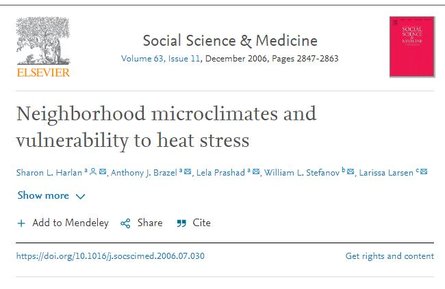
Human exposure to excessively warm weather, especially in cities, is an increasingly important public health problem. This study examined heat-related health inequalities within one city in order to understand the relationships between the microclimates of urban neighborhoods, population characteristics, thermal environments that regulate microclimates, and the resources people possess to cope with climatic conditions. A simulation model was used to estimate an outdoor human thermal comfort index (HTCI) as a function of local climate variables collected in 8 diverse city neighborhoods during the summer of 2003 in Phoenix, USA. HTCI is an indicator of heat stress, a condition that can cause illness and death. There were statistically significant differences in temperatures and HTCI between the neighborhoods during the entire summer, which increased during a heat wave period. Lower socioeconomic and ethnic minority groups were more likely to live in warmer neighborhoods with greater exposure to heat stress. High settlement density, sparse vegetation, and having no open space in the neighborhood were significantly correlated with higher temperatures and HTCI. People in warmer neighborhoods were more vulnerable to heat exposure because they had fewer social and material resources to cope with extreme heat. Urban heat island reduction policies should specifically target vulnerable residential areas and take into account equitable distribution and preservation of environmental resources.
